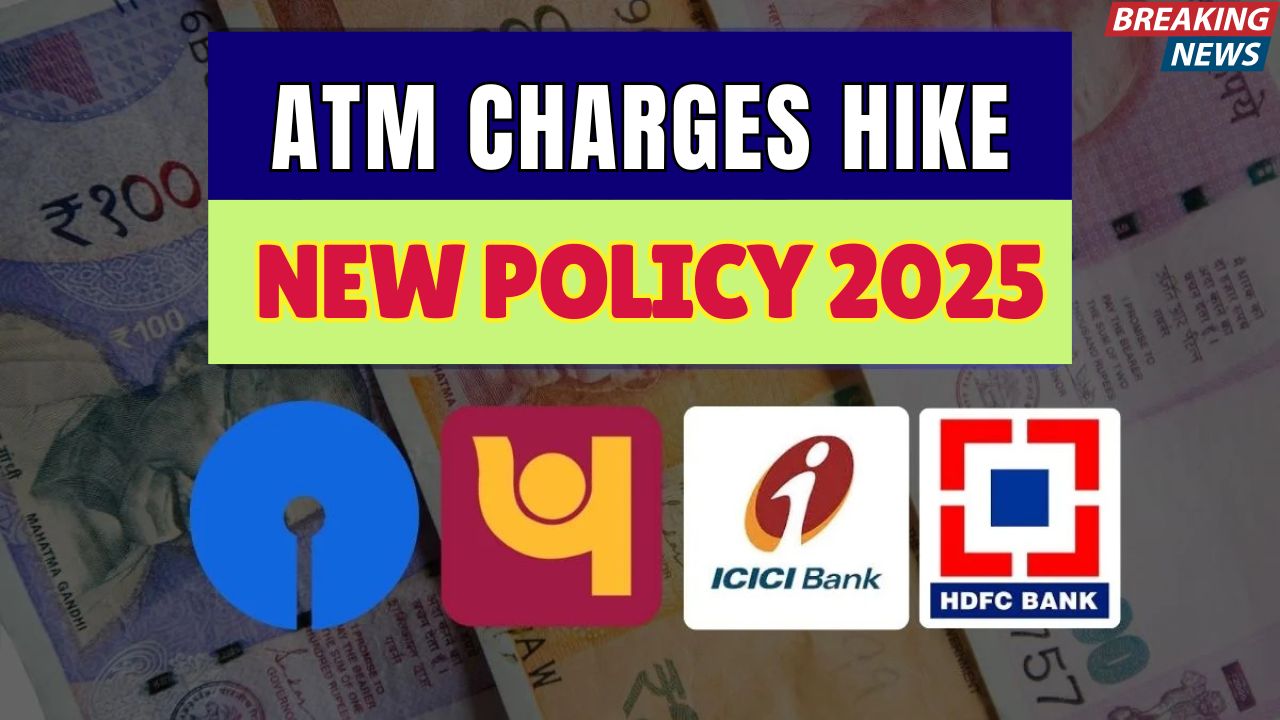From May 15, bank customers across India will face higher charges for ATM withdrawals beyond their free transaction limits. The Reserve Bank of India (RBI) has approved a hike in service fees for additional ATM usage, following requests from banks citing increased operational and maintenance costs. This move is expected to impact millions of account holders who frequently rely on cash transactions.
What Has Changed in the ATM Withdrawal Policy?
Starting May 15, customers will now pay more for each withdrawal beyond the free monthly limit. Until now, most banks allowed five free transactions per month at their own ATMs and three at other bank ATMs in metro cities. Post this limit, users were charged ₹21 per transaction. With the new revision, this fee will rise to ₹23 per transaction, effective across all bank-operated ATMs.
For non-financial transactions such as balance inquiries or mini statements, most banks are still expected to offer free usage within limits. However, the penalty for exceeding free non-financial transaction limits may also be revised in some banks’ individual policies.
Why Are ATM Charges Being Increased?
Banks argue that the operational costs of running ATM networks have risen significantly over the years. Increased spending on technology upgrades, cash handling logistics, cyber-security, and routine maintenance are key contributors to these higher costs. Moreover, inflationary pressures and growing digital infrastructure investments have also prompted the push for this fee hike.
While the hike may seem marginal at ₹2 per transaction, it adds up for frequent users, especially in cash-reliant regions and among small traders and salaried individuals who often exceed their monthly transaction limits.
How Will This Impact Customers?
The increase in ATM charges is expected to pinch the pockets of those who rely heavily on cash, especially people in semi-urban and rural areas where digital payment penetration remains limited. Daily wage earners, pensioners, and the self-employed could feel the greatest burden, as they tend to make multiple cash withdrawals each month.
Urban users who depend more on digital payments may not feel the immediate impact. However, in emergency situations or when digital options fail, these increased charges could still catch many off guard.
What Can Customers Do to Minimize the Impact?
To avoid incurring higher charges, customers can plan their withdrawals better by taking out larger sums less frequently, thereby staying within the free transaction limit. Additionally, using digital wallets, UPI payments, and net banking can help reduce reliance on ATMs altogether.
Banks also recommend enabling SMS alerts or using mobile apps to track transaction limits to avoid accidental overuse. Some premium accounts or salary accounts offer more free transactions or bundled services, which could be an option worth exploring.
Regulatory Oversight and Future Outlook
Although the RBI has allowed banks to revise ATM charges, it continues to monitor customer grievance trends related to banking services. The central bank has emphasized the need for clear communication from banks regarding the new charges. Most banks are expected to notify customers via SMS, emails, and app notifications before implementing the new rates.
As digital banking adoption continues to grow, the future of ATM networks may see a shift from cash dispensing to more multifunctional roles like biometric verification, loan applications, or financial literacy kiosks. Until then, the hike in ATM charges marks another step toward nudging consumers toward digital transactions.




